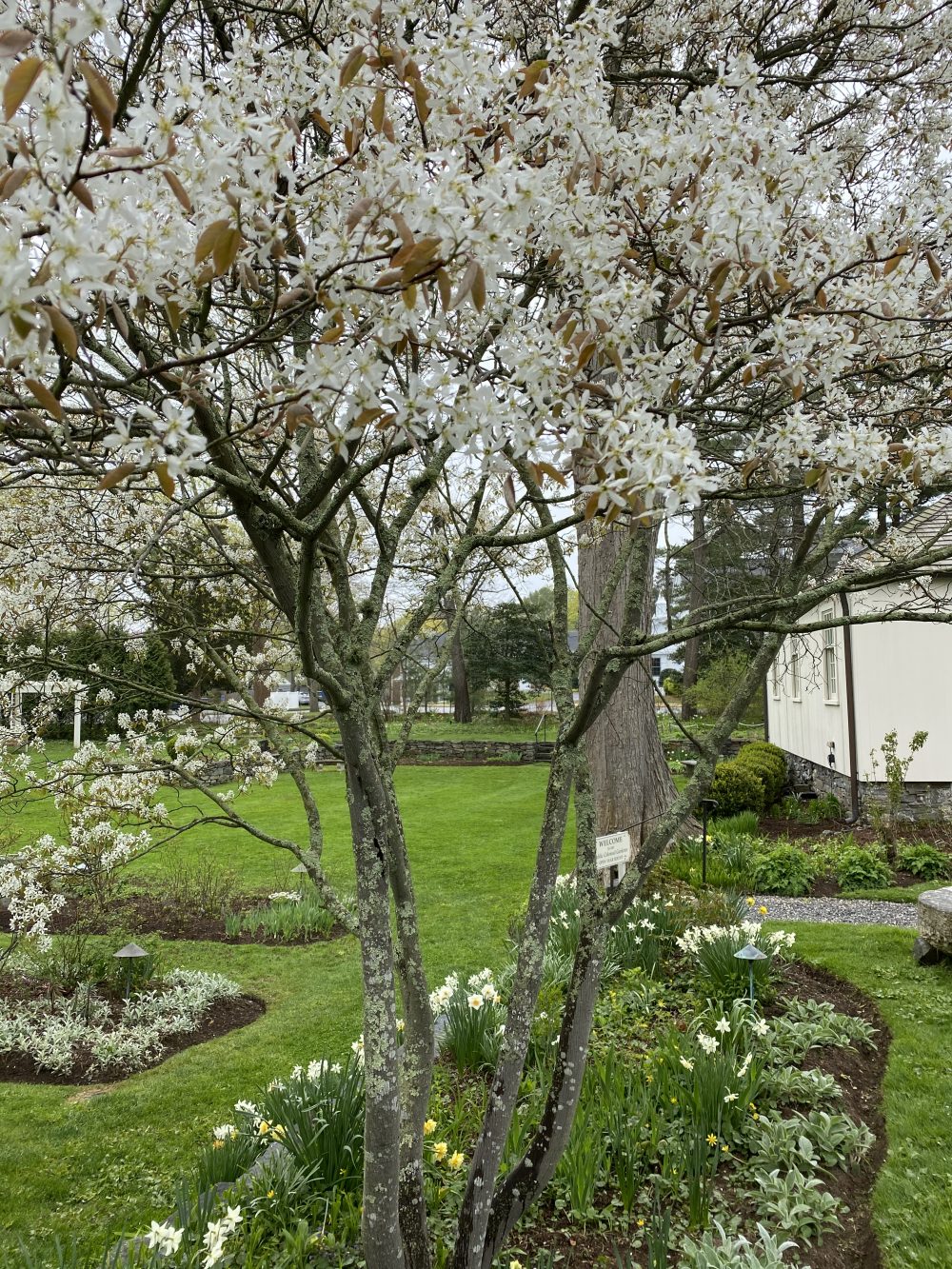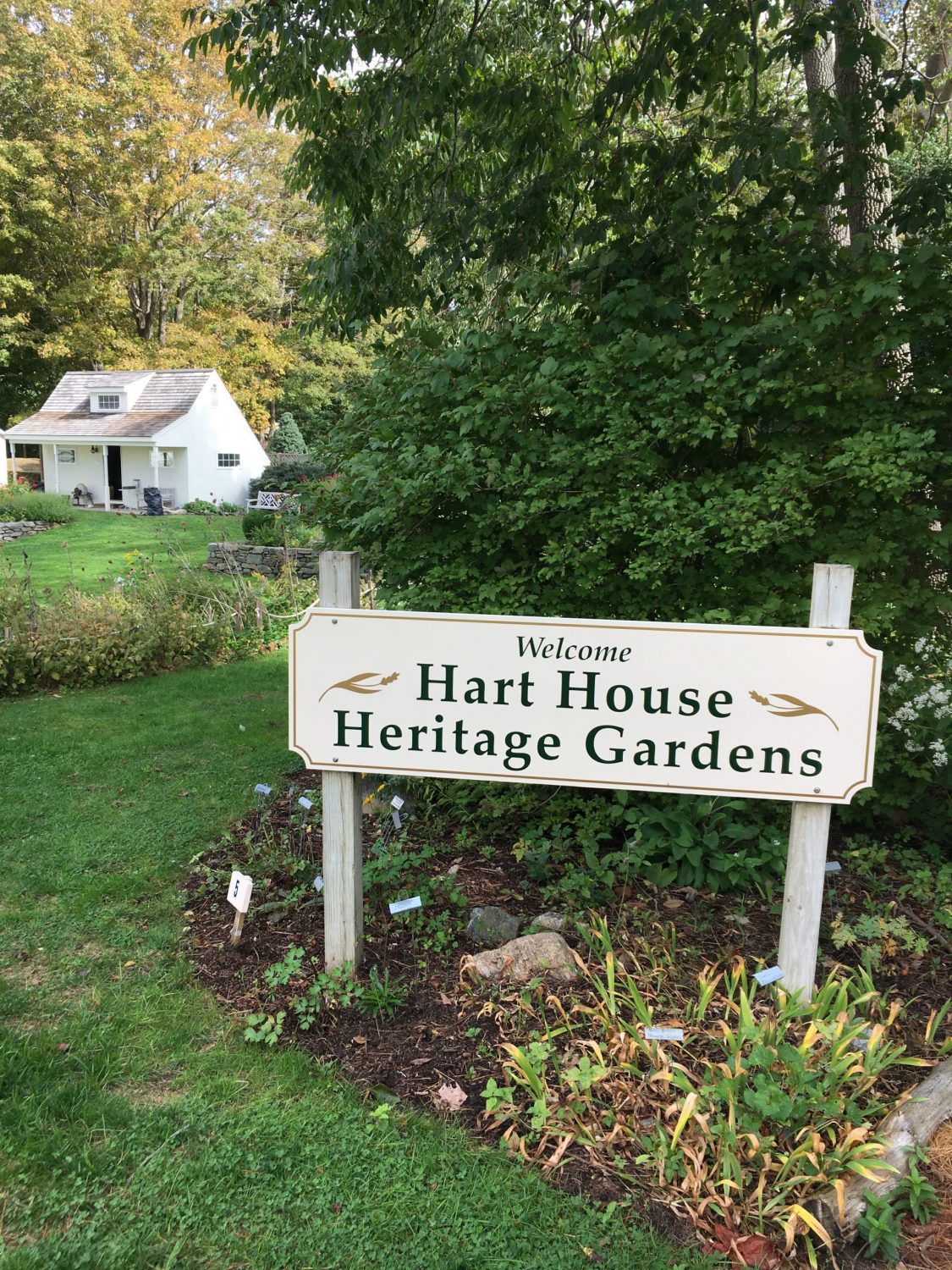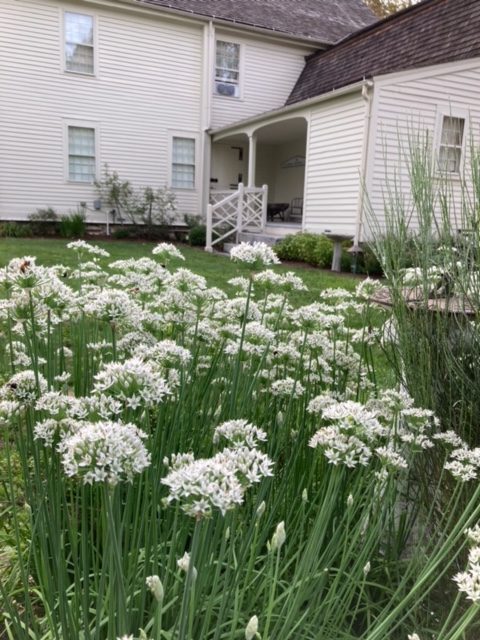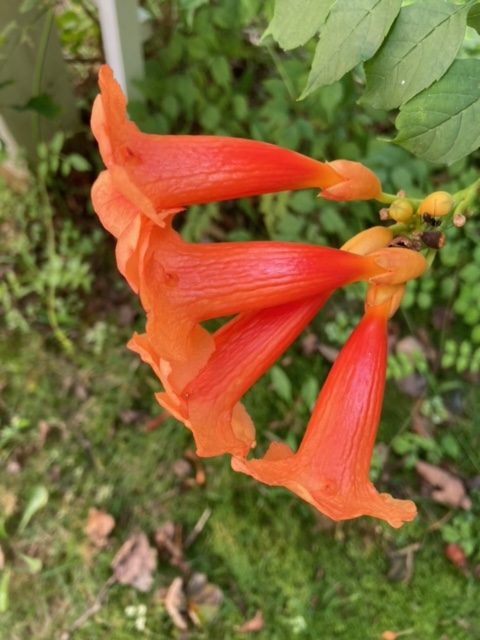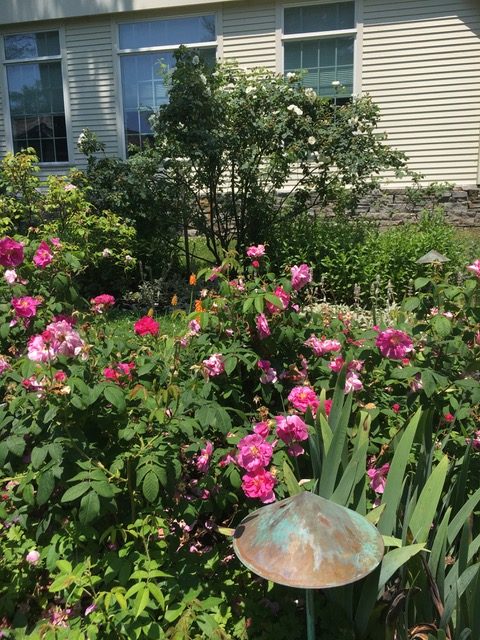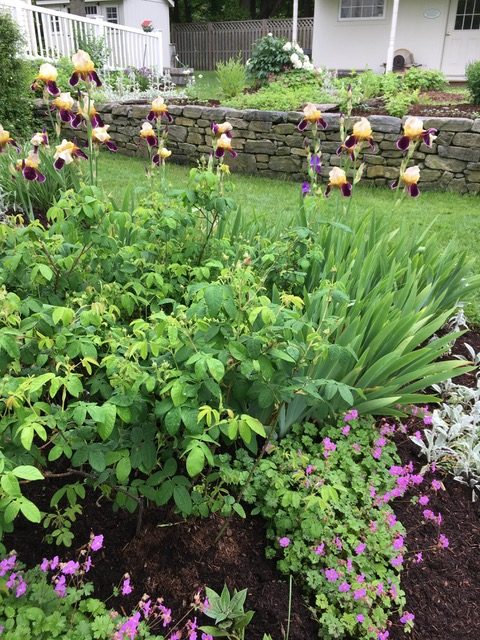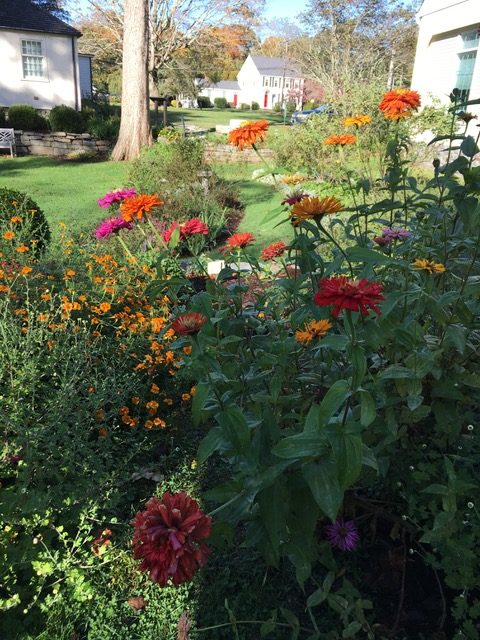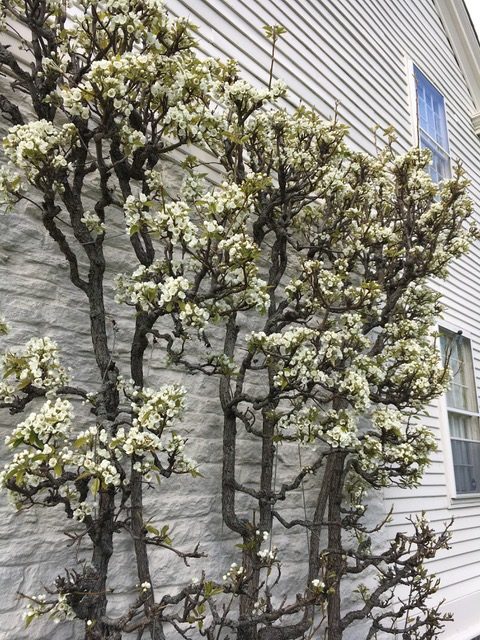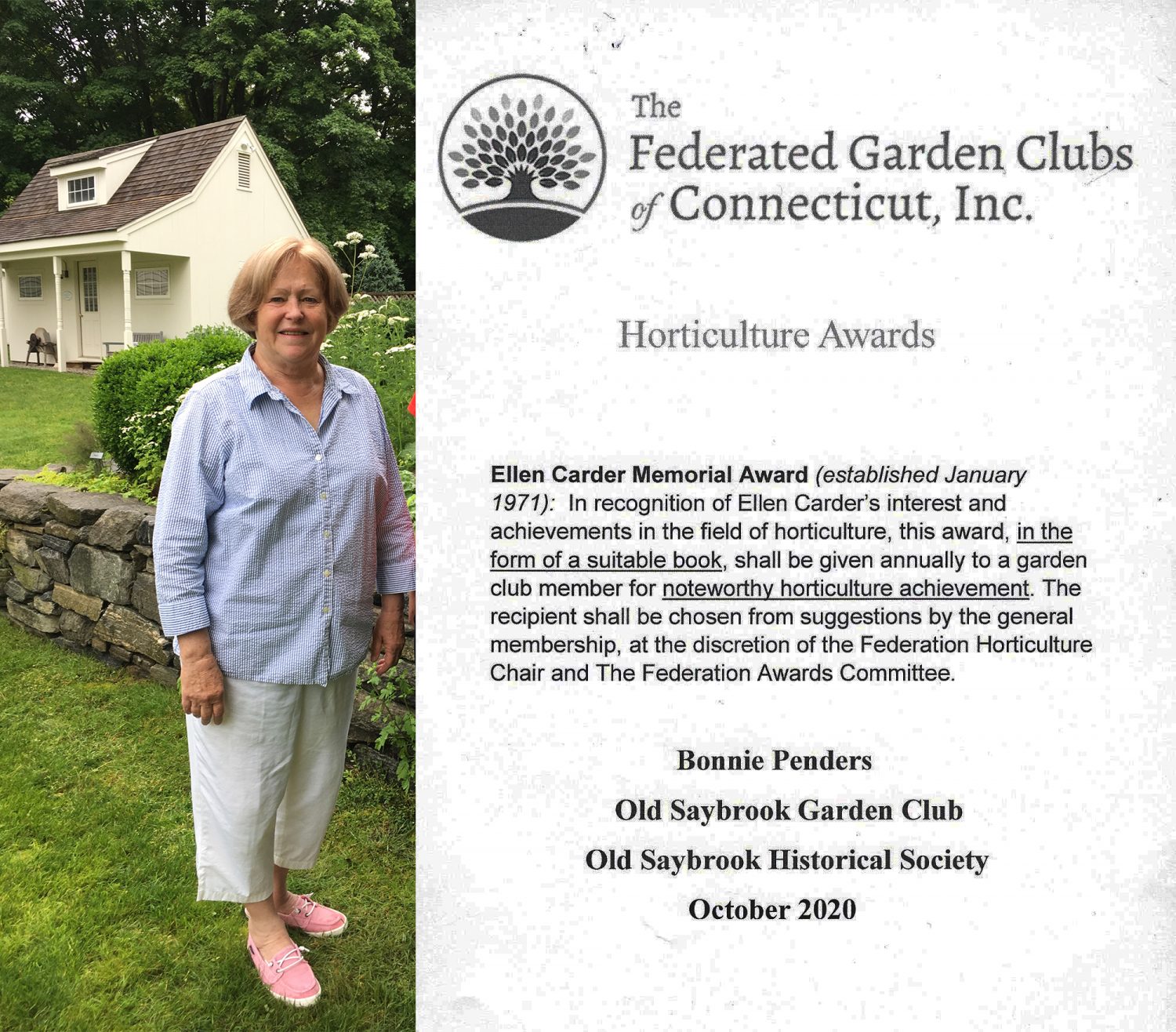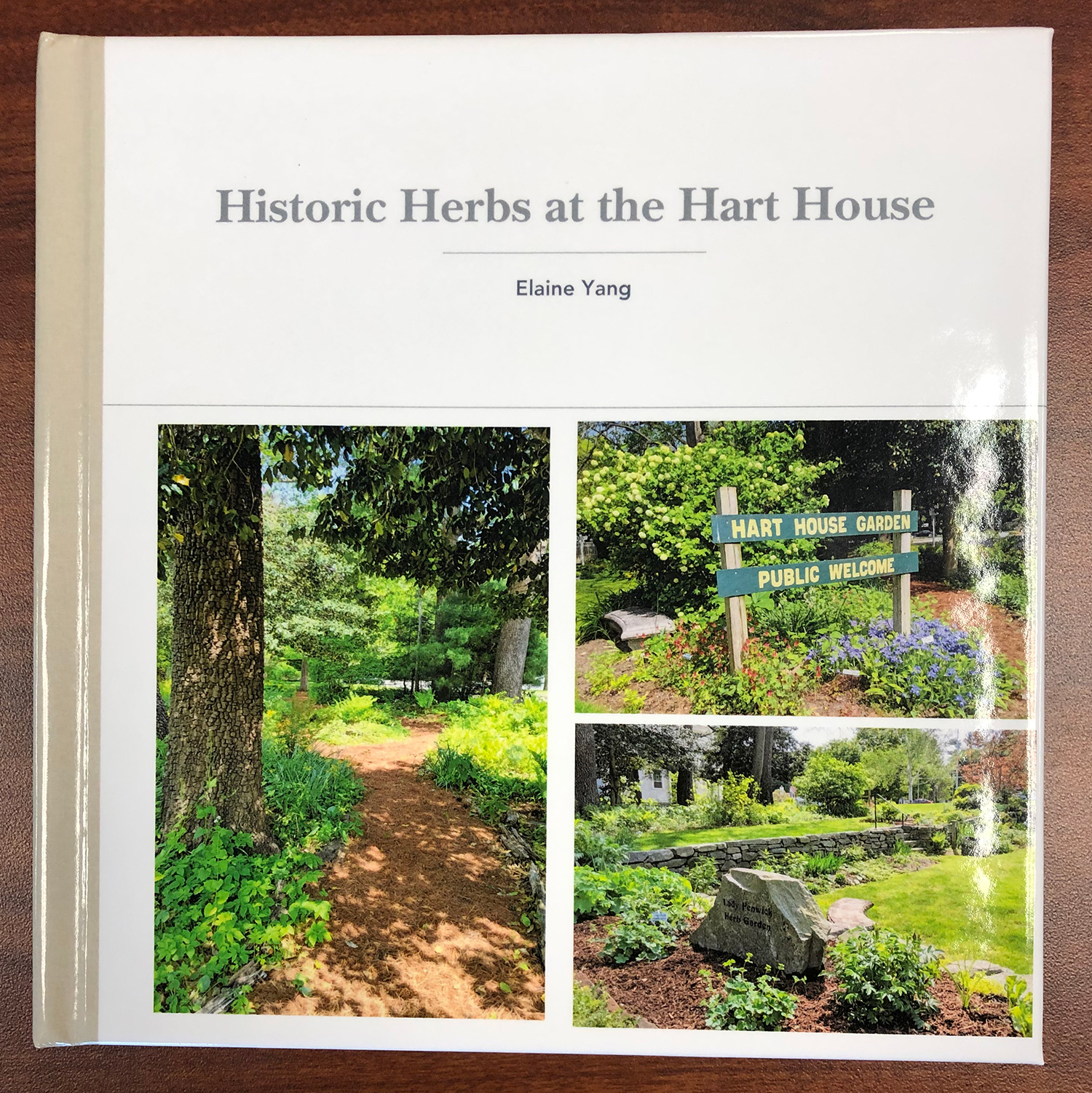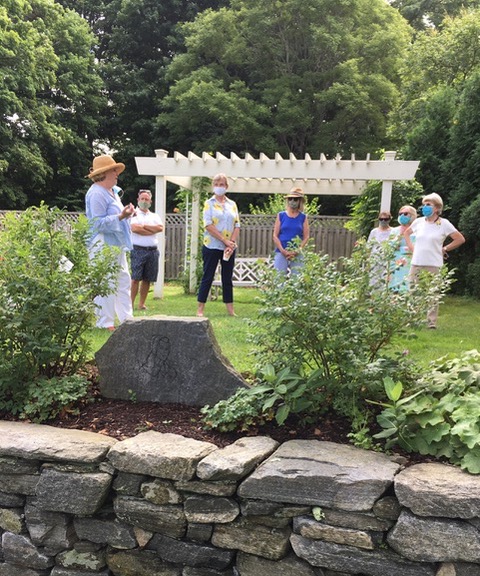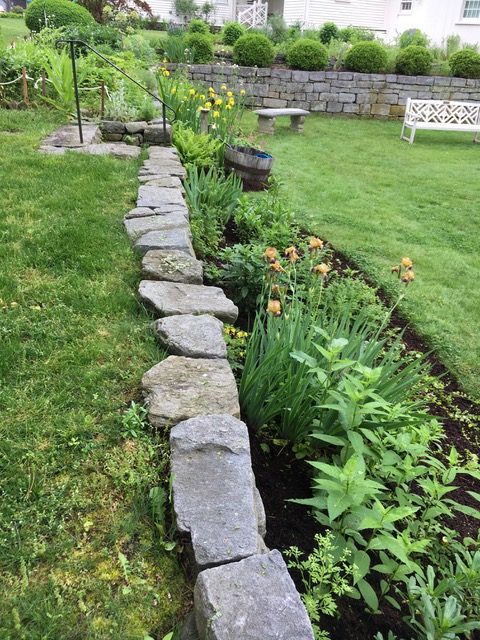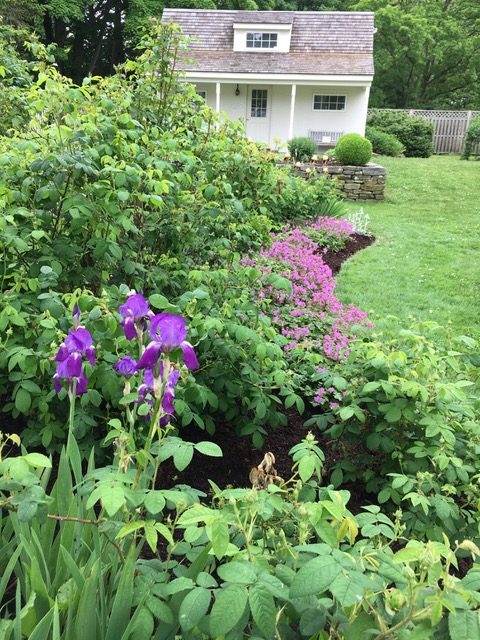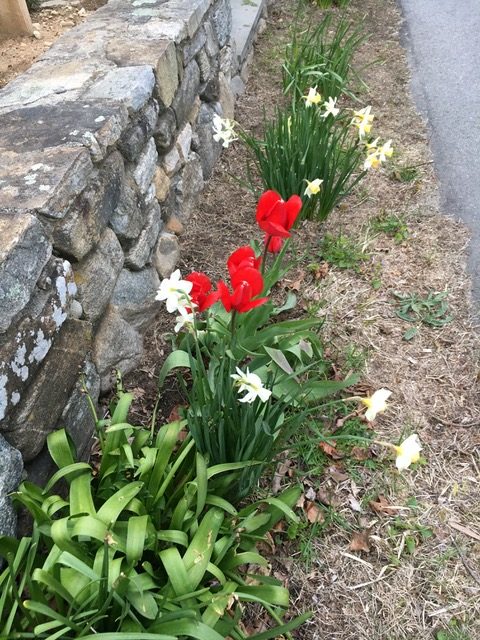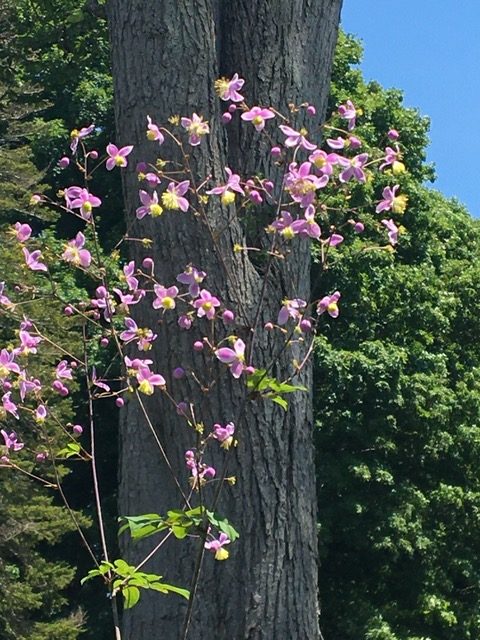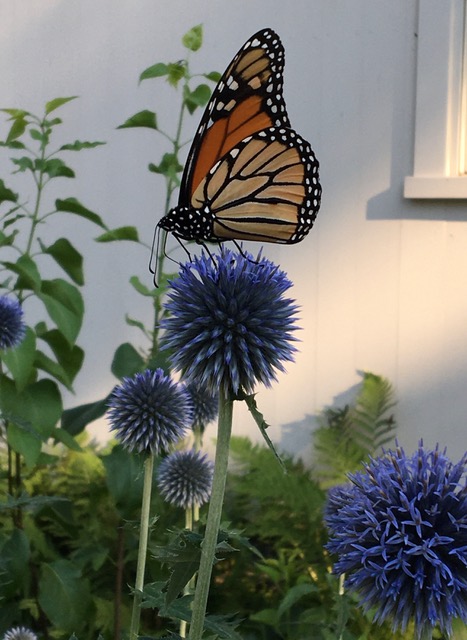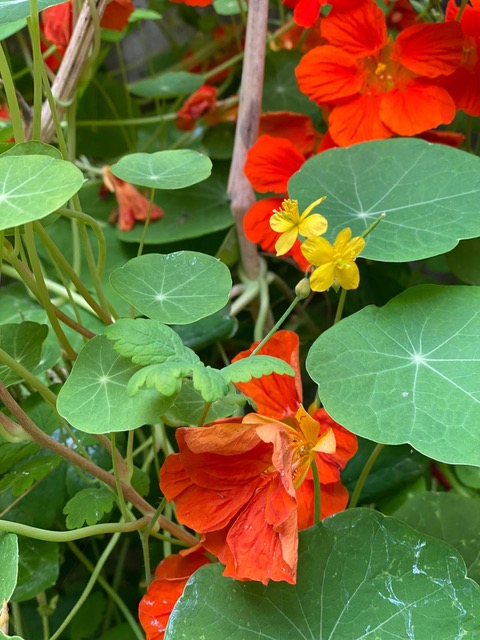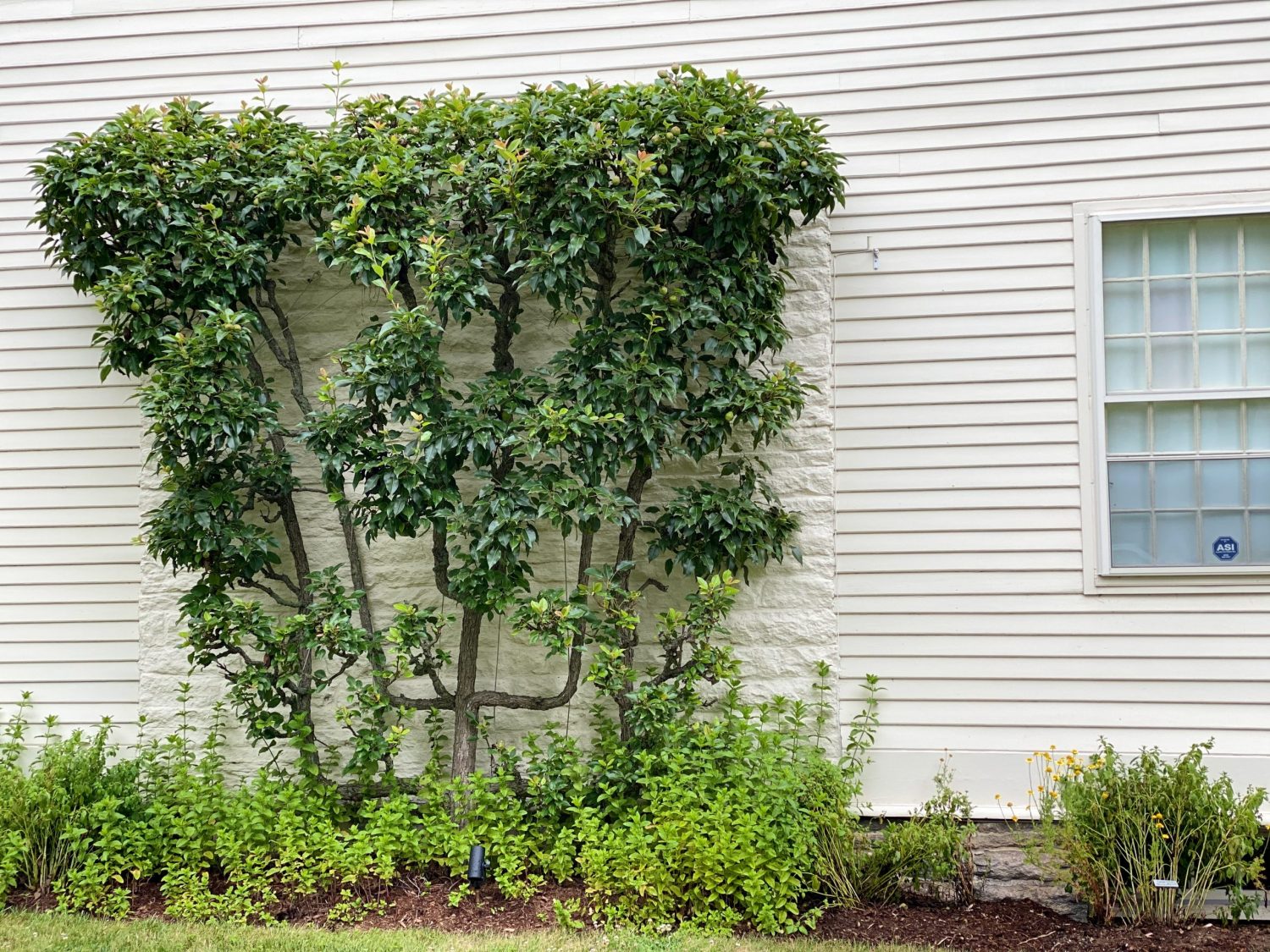Hart House Public Heritage Gardens
The Hart House Garden is situated directly behind the historic General William Hart house. The public is invited to enjoy its peaceful beauty year-round.
When the Historical Society acquired the Hart house in 1974, twelve members envisioned creating an 18th century style garden in the overgrown backyard. The twelve women were experienced gardeners and members of the local garden club. They tackled the project undaunted by the mass of invasive vines, brush and bramble.
Dr. Rudy Favretti, Professor of Landscape Architecture at the University of Connecticut, was consulted for advice on design and appropriate plantings. His knowledge of 17th & 18th century historic building landscapes and his on-site direction inspired authenticity to the project.
Shrubs, fruit trees, old garden roses, annual and perennial flowers and all sorts of herbs used during the colonial period were planted . An espalier pear tree was planted on the south-side of the Hart house. It still bears an abundance of (Williams) Bartlett pears every September.
Many talented volunteers assisted in developing the garden among them, Robert Carter, a Restoration Architect, who enhanced the design with brick pathways and rebuilt a crumbling granite back wall. He also created a new purpose for two large grinding stones from the Saybrook Gristmill. One became a place for outdoor sitting the other a doorway entrance, (to what is now the Exhibit Gallery).
After two years of hard work the Hart House Garden was opened in 1976, as part of the nation-wide bicentennial celebration.
In 1998, the Frank Stevenson Archive Building was constructed. This necessitated significant changes to the garden. Gone were the fruit trees, they were replaced by a large square bowling green sunk below cut-granite stone walls and topped by level flowering garden beds. The old garden roses (OGR) were up-rooted and relocated next to the new Archive building. There are now two wide sections of these fragrant, heritage bushes growing; R.alba, R.centifolia, R.damask, R.gallica and a few others.
In 2003, the funds for a garden shed were donated in memory of founding members Nan & Robert Childress and built by member Bill Goodhue and his son. This was a wonderful and much needed addition for garden storage. We have also been the beneficiaries of four Eagle Scout projects, one of which was the 10×10 pergola. Classic teak benches offer seating for visitors. These were donated by a descendant of Robert Chapman, one of the original founders of Saybrook Colony in year 1636.
Herb Garden
Herbs are grown throughout the garden but there are three specific herb beds with defined objectives. One bed is culinary herbs for donation to the Shoreline Soup Kitchen. Another bed called “Herbs with a Purpose” offers information on the use of herbs in the colonial period. The third is dedicated to Lady Alice Boteler Fenwick. This garden contains ancient herbs used for the health of women.
The award-winning woodland/wildflower garden created in 1999 by Marianne Pfeiffer is a beautiful place, especially in early spring when pink-white trilliums and Virginia bluebells and other delicate ephemerals sprout from the cold earth. They gently bloom as the days warm then disappear when the trees leaf-out, replaced by native ferns, mayapples, miniature iris, Solomon’s seal, and flowering shrubs.
Herb Garden Tour
This is a lovely video which shares a treasure in Old Saybrook: The Old Saybrook Historical Society Herb and Flower Garden. Not only can one learn much about home remedies used during the 18th century but a visit to the garden will restore your peace of mind. It is a wonderful welcoming retreat in downtown Old Saybrook. Thanks to Linda Kinsella and all the residents who volunteer their time and talent to maintain this special place. ~ A. Irons. September 2020
Herb Garden Donation
Donated by Elaine Yang – 2019 Senior Project at Old Saybrook High School.
It is a tribute to Bonnie Penders, a Society Volunteer Gardener and mentor to Elaine and to the commitment of the Society to its public gardens.
The garden changes with the season; in spring the showy daffodils are superseded by tulips, iris, peonies, betony, candytuft, feverfew, centaurea, dianthus, daylily, lady’s mantle and roses to name just a few. Summer brings bellflowers, spider-wort, purple lavender, hollyhocks, foxglove, comfrey, calendula, aster, columbine, morning glory, delphinium, dahlia, heliotrope, larkspur, phlox, coreopsis, yarrow and much more. The landscape is colored in fall with orange, red and gold flowers and the glorious perennial chrysanthemum that triples in size and bursts with pink-white flowers from late September into Thanksgiving.
July 2021
“The Pollinator Pathway project is organized by volunteers from town conservation organizations working together to establish pollinator-friendly habitats and food sources for bees, butterflies, hummingbirds and other pollinating insects and wildlife along a series of continuous corridors. Most native bees have a range of about 750 meters, about a half a mile, so the goal is to connect properties that are no farther apart than that. This project began in Seattle, Washington in 2008 and has steadily moved eastward across the United States; it began in Wilton, Connecticut in 2016. Since then, pathways have been established in over 200 towns in CT, NY, MA, NJ, PA and the list keeps growing.”
Kelly Harthorn, Conservation Commission and Bonnie Penders, OSHS and OSGC gardener, are taking the lead on this project. To date, six gardens have been identified as ‘good candidates’ for this initiative: The Landrey Garden at the Parker House (Chuck Landrey), Founders Memorial Park (Barbara Guenther), OSGC Constitution Garden (Mary Beth Unkrich), Common Good Garden (Linda Clough), Hart House Heritage Gardens (Kinsella and McFarlin) and Saybrook Point Pollinator Garden (OS high school ecology class created this garden this spring; the soil was tested and the plants are in place). These six gardens create a perfect beginning pathway for our pollinators.
We’re just getting the ball rolling, in recent weeks the OS PFP core team encouraged the OS Garden Club gardeners to select plants that are pollinator friendly for their Main Street median gardens, the fire house, library planters and the Constitution Garden at Saybrook Home, etc. Businesses and personal, private gardens are following suit. It’s just the beginning of Old Saybrook creating ‘pathway gardens’ of native plants providing habitats and food sources for our birds and insects.
This program is a win-win-win for the town, for the Hart House gardens and for our neighbors up and down the corridor of Main St. It’s as simple as putting a medallion in your public or private garden for others to be educated, confirming that there are not pesticides and chemical fertilizers in the garden, and when planting new plants to always give priority to natives when possible. Easy!
Check out Old Lyme’s involvement on the web. https://www.facebook.com/PollinateOldLyme/
Bonnie is the liaison to the Conservation office via Kelly, on behalf of these six gardens, but they are independent entities. Kelly has recently built an OS presence on the PFP web site to further get information out to our community.
“If we begin to manage our own yards organically and with native plantings, we can use them to connect parks and preserves, creating crucial corridors for wildlife. This is the idea behind the Pollinator Pathway.”
Bonnie Penders
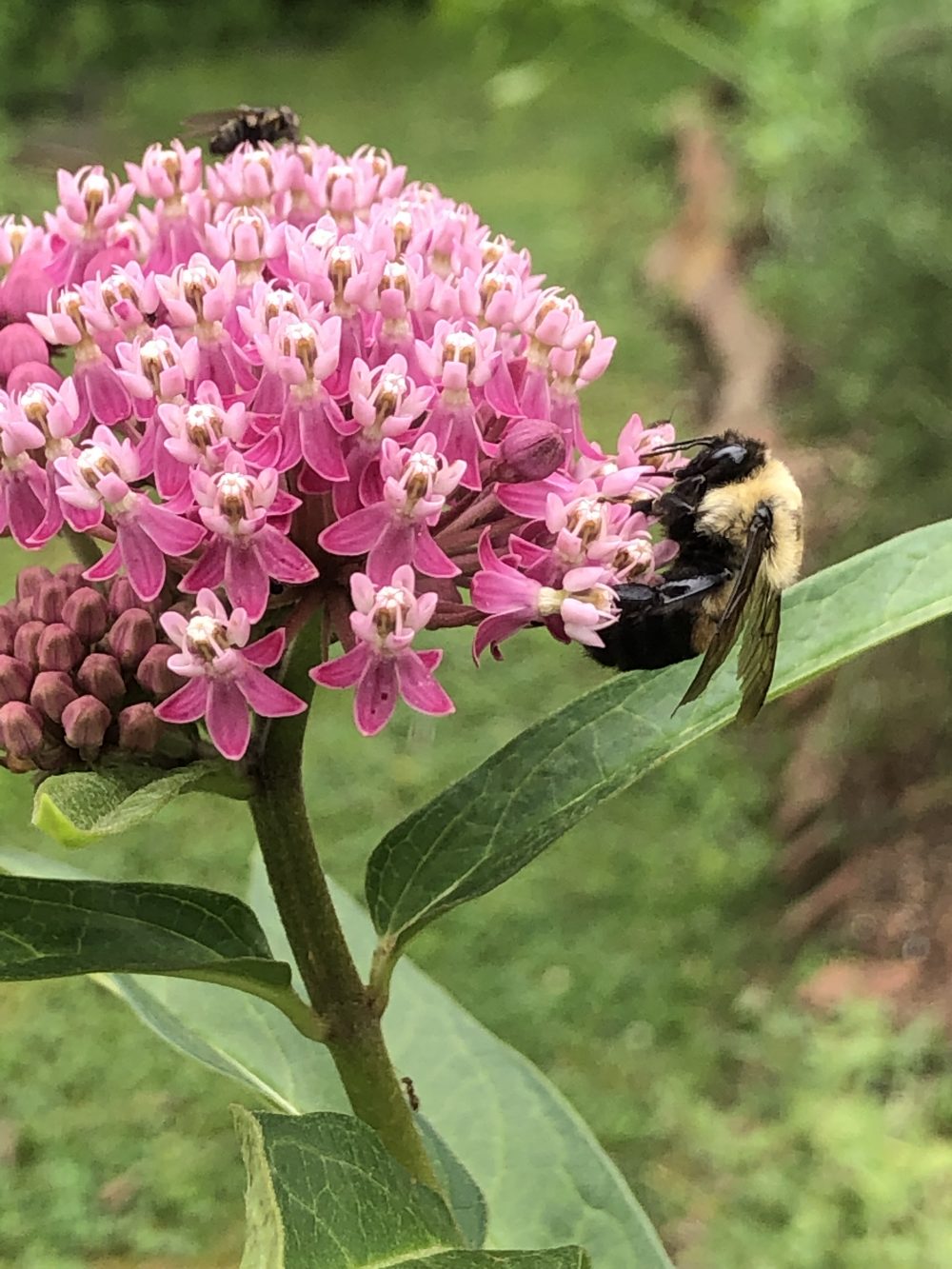
Photo courtesy of Chuck Landrey
You can find two of these medallions in the HH Heritage Garden

Hart House Garden beds are numbered as follows:
BED #1 Heritage Flowers,
BED #2 Old Garden Roses,
BED #3 Sally’s Garden – Stories and “I Spy” Objects for children
BED #4 The Lady Fenwick Herb Garden
BED #5 Marianne Pfeiffer Wildflower Garden
BED #6 Teaching Garden “Herbs with a Purpose”
BED #7 Culinary Herbs for Donation to the Shoreline Soup Kitchen
BED #8. Dahlia Garden
BED #9 Memory Garden of Roses
BED #10 Thayer Memorial Garden, Sage and Hollyhock
BED #11 Gallery Door – Perennial & Annual Cutting Flowers
BED #12 Espalier Pear Tree (Williams pear also known as Bartlett pear)
The Hart House Garden is cared for by volunteers from April to October.
Linda Kinsella, HHG Keeper

